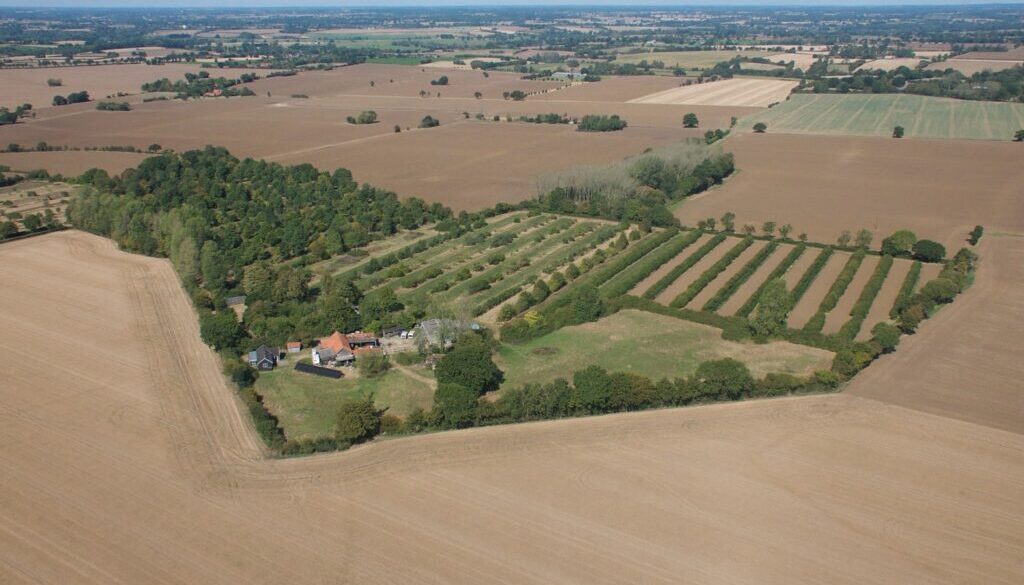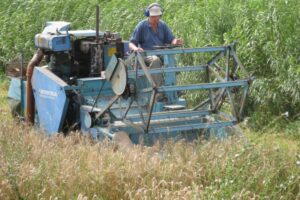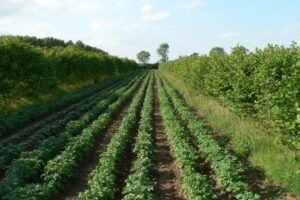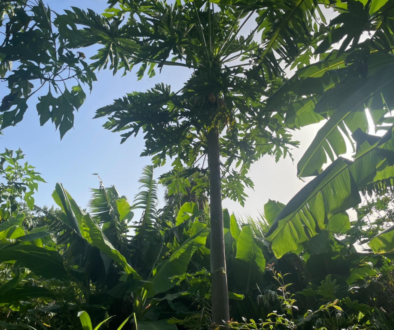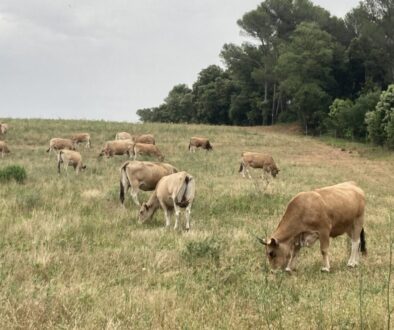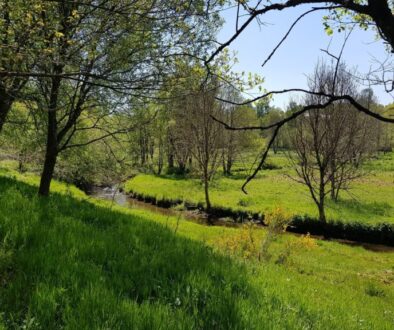Wakelyns Agroforestry – a diverse organic silvoarable system in the UK
Wakelyns farm is a 23 ha organic farm in east Suffolk, in the heart of an intensive cereal production area of the east of England.
The farm was bought by Prof. Martin Wolfe in the early 1990’s, following a brilliant research career in cereal plant pathology through the 1970’s and 1980’s, with the dream of demonstrating the value of focused diversity in minimising crop disease pests and weeds in mixed cropping and, ultimately, of agroforestry systems.
The main planting of timber trees was organised for early 1994, with further plantings in 1995 (hazel) and 1998 (willow). Before returning to England in 1997, they also started organic conversion of the whole farm. From earlier contacts with Elm Farm Research Centre (now ORC: the Organic Research Centre), it seemed mutually desirable to focus EFRC’s arable crop projects and trials at Wakelyns, which was started formally in 1998.
The general layout of the farm (Google Earth UK postcode IP21 5SD) is a series of 2 ha alley-cropping systems, with all production hedges aligned north-south on each side of 12 m wide cropping areas. There are two coppice systems (hazel, willow), two mixed hardwood systems (ash, hornbeam, Italian alder, oak, small-leaved lime, sycamore, wild cherry, with or without apple) and two mixed fruit and nut systems. The organic crop rotation (cereals-ley-potatoes/squash-ley-cereals) runs as a single cycle around the whole farm.
Some successes – and some difficulties
Since the initial stages, the approach appeared to have been successful with high outputs of timber production, relatively small impacts on crop production and obvious positive effects on soil quality and biodiversity. The main negative effect has been the limitation on cultivation potential, since all operations are limited to the north-south direction. Weed control is a major feature of the production systems, but this is no different from what would be expected generally in organic farming. It is likely that the negative effect of tree shade on the crops has been offset by positive effects of shelter, nutrient cycling, etc. Potential negative effects of competition for water appear to have been offset by a generally adequate supply of water and improved soil penetrability.
One particular, but expected, success, was the positive impact on apple diseases and pests of dispersal of the apple trees among the other seven tree species. This provided spatial dispersion of the apple target trees as well as physical buffering of the spread of apple pests and pathogens by the non-host trees and crops. Disease assessments carried out in 2012 as part of the EU project Co-Free recorded levels of apple scab (Venturia inequalis) in the agroforestry were less than half those in a nearby modern organic orchard (Smith et al, 2014). Though not tested, it is reasonable to assume that specialised pests and diseases of each of the other tree species, would have been similarly limited.
A related observation has been the impact of the production hedges on disease spread in the alley crops. In particular, they have observed, over several seasons, the way in which trees can provide a physical barrier to help limit the spread of potato blight from west to east – which would not have occurred with standard open field crops.
A major success over the whole period has been the development of the coppice systems. This allowed them to install a woodchip boiler system to generate sustainable and renewable energy for central heating and hot water in the farmhouse. In this context, it is important to underline that the coppice hedges provide many services (better microclimate, pest and disease protection, nutrient cycling, biodiversity habitat) before they deliver coppiced woodchip. Moreover, the alley system ensures a yield of wood per square metre that is well in excess of yields from plantation coppice. In this context they chose to turn to more pollarding as the major method of management for the hardwood trees, both to limit shading of the alley crops and to increase potential fuel production (see below).
Overall, there has been a major increase of biodiversity on the farm which has been positively affected by the tree population. This is evident among both birds and bees, helped by the large proportion of mixed legumes in the crop rotation. Among the birds, it is clear that the site is now more attractive both to typical woodland birds and to those found in lowland arable farms. They regularly see barn and tawny owls, together with buzzards, which indicates an effective food pyramid on the relatively small area of the farm.
In recent years, they have also become increasingly aware of tree regeneration in the production hedges, leading to large numbers of healthy young trees covering all of the species planted, though with changed proportions. Some of these are being replaced by fruit bushes in the understorey.
Future development
One element that has been notably absent so far has been livestock, since they had neither facilities not expertise available to develop such enterprises. A first step in correcting this omission is the introduction of organic, low density, poultry for egg production, using several breeds, with replacements now being bred on-site. The birds are fenced into long alley strips which include the tree hedge as the central element, clearly favoured by the birds because of the shelter from predators and the food and nutrient-rich understorey of the trees. An additional step was to rotate the poultry strips around the crop and tree rotations to try to follow the impact of the poultry particularly on pests and weeds.
In terms of the crop-tree interface, they have experiential evidence that oats is much less disturbed by tree proximity than are the other major cereals. However, among all species there is the possibility of breeding and selecting for the ability to grow well in the proximity of trees. Indeed, they have already taken the first steps in this direction through use of our newly developed wheat populations. These are highly diverse so that it is possible to identify and tag individual plants that grow well close to trees. These individuals can be used to create a mixture of wheat genotypes with this ability. Although such diversity certainly exists, we do not know the mechanisms, whether it is shade tolerance, tolerance of water competition, annual-perennial root interactions, or some combination of these and other factors. By selecting the wheat for the ability to grow near any trees, it may be possible to generate a mixture which could be marketed separately for production in a strip close to any hedge in addition to the agroforestry production hedges. This innovation is being researched as part of the EU project AGFORWARD (www.agforward.eu).
One of the most exciting potential developments from increased coppicing and pollarding is the possibility of generating sufficient woodchip to feed an on-farm CHP (combined heat and power) unit, or, in other words, to use agroforestry as a source of renewable electrical as well as heat energy. This could be used as a way of controlling the variable output of on-farm solar and wind systems. Again, it is important to stress that such energy production would be a by-product of a system that is already delivering a range of valuable services.
In this context, it is of crucial importance for the long-term, to record, assess and accumulate the multiple outputs and benefits of such complex systems. One way to do this may be to assess the potential for the contribution of the multiple outputs to local food systems, local economies and local health and welfare.
Wakelyns has a long association with the team from the Organic Research Centre some of whom were based at Wakelyns for several years. Together with Martin Wolfe, they undertook groundbreaking research across a range of issues related to organic agroforestry at Wakelyns.
Learn more here: https://wakelyns.co.uk/
